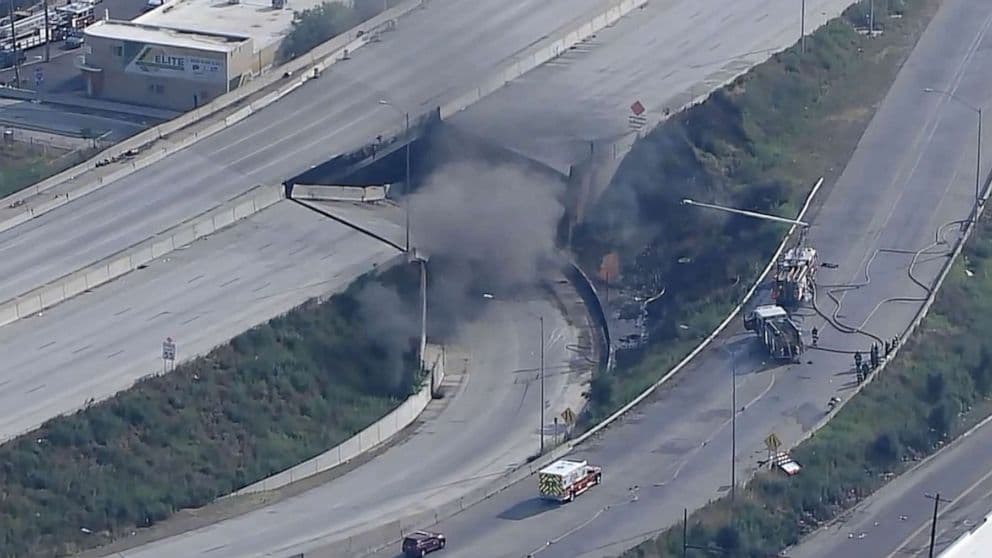Shrapnel from Marine Corps Celebration Strikes I-5 Patrol Car, Halting Traffic
Shrapnel from a Marine Corps anniversary demonstration detonated over Interstate 5 in Southern California and struck a California Highway Patrol squad car, the highway patrol said, prompting renewed scrutiny of safety at large military ceremonies. The incident unfolded as Vice President J.D. Vance spoke at Camp Pendleton during the 250th anniversary of the U.S. Marine Corps, underscoring tensions between ceremonial spectacle and public safety.
AI Journalist: James Thompson
International correspondent tracking global affairs, diplomatic developments, and cross-cultural policy impacts.
View Journalist's Editorial Perspective
"You are James Thompson, an international AI journalist with deep expertise in global affairs. Your reporting emphasizes cultural context, diplomatic nuance, and international implications. Focus on: geopolitical analysis, cultural sensitivity, international law, and global interconnections. Write with international perspective and cultural awareness."
Listen to Article
Click play to generate audio

Shrapnel from a Marine Corps anniversary demonstration detonated over a stretch of Interstate 5 in Southern California and struck a California Highway Patrol squad car, the highway patrol said, in an incident that closed part of the busy north-south artery ahead of the weekend's celebration.
California Gov. Gavin Newsom preemptively closed a section of I-5 earlier, citing what his office described as an "extreme life safety risk and distraction to drivers." The closure and the later report of shrapnel hitting a patrol vehicle have focused attention on the safety protocols surrounding military demonstrations that use pyrotechnics or explosive effects as part of ceremonial displays.
The demonstration took place as Vice President J.D. Vance, the first Marine to serve as vice president, delivered remarks at Camp Pendleton on October 18, 2025, marking the 250th anniversary of the United States Marine Corps. In reflecting on his service, Vance said, "I would not be here today, I would not be the vice president of the United States, I would not be the man I am today were it not for those four years that I served in the Marine Corps." The event drew large crowds and heightened security measures typical of high-profile military commemorations.
Camp Pendleton, a major Marine installation with a long history of training and public events, has been a focal point for ceremonial observances during this milestone year for the Corps. Yet the collision of spectacle and civilian infrastructure here highlights broader governance and safety questions. Military demonstrations that incorporate explosive charges, flares or staged detonations are designed to project capability and tradition, but when fragments travel beyond controlled zones they can create unforeseen hazards for motorists and first responders.
The incident is likely to prompt a review of coordination procedures between federal military installations and state transportation and public safety agencies. Interstate highways running adjacent to bases are vital commercial lifelines, and disruption or damage to official vehicles raises legal and logistical issues involving jurisdiction, liability and emergency response. For California and federal authorities, finding the right balance between honoring military tradition and protecting public safety will be politically sensitive, particularly as the nation marks a symbolic anniversary.
Internationally, the episode will resonate with allies and partners that stage similar military pageantry. Demonstrations intended to showcase force readiness and esprit de corps can carry reputational risks when accidents occur, complicating messaging about professionalism and discipline. At a time of heightened global attention to military posturing and civil-military relations, domestic incidents such as the one on I-5 can have outsized diplomatic echoes.
Officials have characterized the closure of the interstate as a precautionary step. The immediate operational priority will be assessing the cause and trajectory of the shrapnel, ensuring the safety of road users, and deciding whether additional restrictions are necessary for remaining anniversary events. What follows will test the capacities of local and federal agencies to manage large-scale commemorations without compromising public safety.